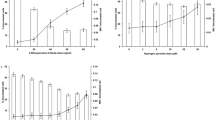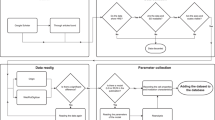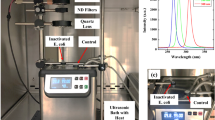Abstract
SURVIVAL curves for Chlamydomonas reinhardii exposed to ionising radiation have an initial ‘shoulder’ region where sublethal damage is accumulated, followed by an exponential region where a further single event will result in cell death. When an initial dose is given to cells, sufficient to reduce the surviving fraction to the exponential region, followed by a series of graded doses given some hours later, cells recover from sublethal injury inflicted by the first dose, as shown by the return of the shoulder region on the second dose survival curve. The slope of the exponential region of the second dose survival curve is smaller than that of a single dose survival curve1. Thus cells have become more resistant as a result of exposure to a first dose. A similar effect has been reported for a line of HeLa S3 cells2. The increase in resistance observed in these two types of cell has been interpreted1 as resulting from an increase in the capacity of cells to repair radiation damage. An alternative hypothesis3 that could account for the observed change in sensitivity proposes that cells sublethally damaged by the first dose of radiation are repaired during the interval between doses, so as to render the intracellular sites less susceptible to damage from a second dose of radiation. The experiments reported here cast doubt on the validity of the latter hypothesis.I also report that irradiation of cells in aerobic or anoxic conditions was equally effective in inducing an increase in resistance of cells to a second series of doses. That is, the oxygen enhancement ratio (OER) was 1.0 for induction of resistance, in contrast to the OER of 2.2 observed for cell killing. The OER for cells killed by a second series of doses given some hours after an initial dose was the same as that for cells killed by single doses.
This is a preview of subscription content, access via your institution
Access options
Subscribe to this journal
Receive 51 print issues and online access
$199.00 per year
only $3.90 per issue
Buy this article
- Purchase on Springer Link
- Instant access to full article PDF
Prices may be subject to local taxes which are calculated during checkout
Similar content being viewed by others
References
Hillova, J., and Drasil, V., Int. J. Radiat. Biol., 12, 201–208 (1967).
Lockart, R. Z., Elkind, M. M., and Moses, W. B., J. natn. Cancer Inst., 27, 1393–1404 (1961).
Bryant, P. E., Int. J. Radiat. Biol., 26, 499–504 (1974).
Alper, T., in Proc. second Symp. Microdosimetry, Stresa, 1969 (edit. by Ebert, H. G.), 5, EUR4452 d-f-e (Euratom, Brussels, 1970).
Alper, T., Nature, 217, 862–863 (1968).
Davies, D. R., Nature, 215, 829–832 (1967).
Deering, R. A., Smith, M. D., Thomson, B. K., and Adolf, A. C., Radiat. Res., 43, 711–728 (1970).
Bryant, P. E., thesis, Univ. London (1970).
Bryant, P. E., Nature, 219, 75–77 (1970).
Deering, R. A., Radiat. Res., 19, 169–178 (1963).
Anderson, E. H., Proc. natn. Acad. Sci. U.S.A., 37, 340–349 (1951).
Bridges, B. A., and Munson, R. J., Mutat. Res., 1, 362–372 (1964).
Moore, J. L., J. gen. Microbiol., 41, 119–126 (1965).
Lyderson, B. K., and Pollard, E. C., Radiat. Res., 64, 237–244 (1975).
Bryant, P. E., Int. J. Radiat. Biol., 27, 95–102 (1975).
Author information
Authors and Affiliations
Rights and permissions
About this article
Cite this article
BRYANT, P. Absence of oxygen effect for induction of resistance to ionising radiation. Nature 261, 588–590 (1976). https://doi.org/10.1038/261588a0
Received:
Accepted:
Published:
Issue Date:
DOI: https://doi.org/10.1038/261588a0
This article is cited by
-
Metallo-adaptive response: a unique survival strategy of plants under genotoxic stress
The Nucleus (2022)
-
Does single-dose cell resistance to the radio-mimetic zeocin correlate with a zeocin-induced adaptive response in Chlamydomonas reinhardtii strains?
Radiation and Environmental Biophysics (2009)
-
Induction of DNA double-strand breaks by zeocin in Chlamydomonas reinhardtii and the role of increased DNA double-strand breaks rejoining in the formation of an adaptive response
Radiation and Environmental Biophysics (2007)
-
The effect of glycolysis inhibitors on the radiation response of CHO-K1 cells
Radiation and Environmental Biophysics (1988)
Comments
By submitting a comment you agree to abide by our Terms and Community Guidelines. If you find something abusive or that does not comply with our terms or guidelines please flag it as inappropriate.



